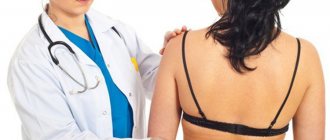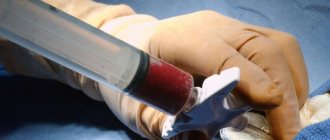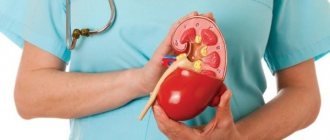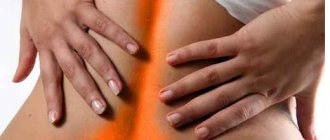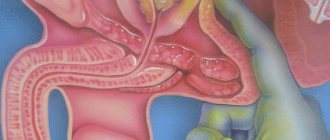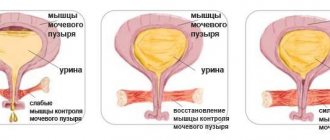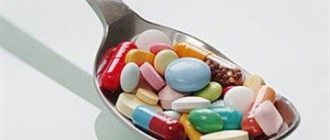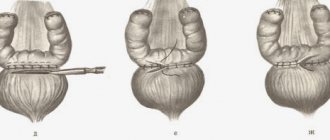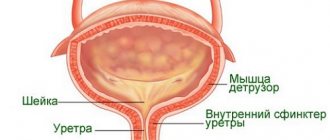Kidneys perform many important functions in the human body:
- Excretory , responsible for the production of urine.
- Filtration , which includes cleansing the body of various bacteria, waste and toxins.
- Homeostatic , regulating the volume of blood and intercellular fluid.
- Metabolic , implying the participation of the kidneys in the metabolism of proteins, carbohydrates and lipids.
With such work of the kidneys, it is important to monitor their proper functioning and take preventive measures as often as possible in order to protect them from various serious diseases. One of these preventive measures is massage.
Kidney massage at home
Kidney massage can be learned independently and done regularly at home without the help of a professional.
Options for exercises that a person can do for himself:
- For the first exercise you need to lie on your back . The surface should not be too soft or hard, so as not to damage the spine, and you will need a small cushion under your head. Lying on the surface, inhale air while sticking your stomach forward. When exhaling, make sure that the air is pushed out of the lungs, and at this time the stomach stretches upward. Then, using the index and middle fingers of both hands, find the soft tissue points of the abdomen on both the left and right sides of the navel. Hold your breath and feel the hard end of the kidney with your fingers and gently guide it towards your head. As you inhale, remove your fingers from your body. Repeat 5 times. This exercise helps get rid of swelling and prevents kidney dysfunction.
- Take a lying position . Inhale air and at the same time stick out your stomach. Bend your knees. As you exhale, press the point located 3 cm from the navel with the fingers of your right hand on the left side. And with your left hand on the same side, hold the costal arch. Hold your breath and begin to point your hands towards each other, creating funnel-shaped pressure on your kidneys. When you feel that you can no longer live without air, suddenly remove your hands. Do the exercise on the right side. Repeat the exercise 3 times for each kidney.
- For the next exercise, you will need a sturdy chair with a backrest and a small pillow. Sit face down on a chair. Place a pillow on your back and tilt your head on it. Then feel the area of the sacrum with your thumbs and press on it. Massage this area in a circular motion, moving towards the sides. Unpleasant sensations are possible. Massage for half a minute.
- Lie on your back and bring your knees to your chest . Then make circular movements with your pelvis to the left side, and then to the right. It is advisable to make five circles in each direction.
Exercises should be performed in two sets 3 times a week, every other day. In addition, there is a massage for the kidneys, which is performed by an assistant. Several massage steps:
- First you need to warm up your muscles. Using gentle circular movements, you need to move from bottom to top along the back, and then back. Warming up takes about 2 minutes.
- Afterwards, with your fingers in the lumbar region, movements are performed clockwise and counterclockwise, alternately in each direction, 20 times.
- The next step requires a supine position. You need to make circular movements in the navel area with your fingers, moving towards the ribs, while pressing lightly. In this case, you need to press lightly. The exercise should be done five times.
After the massage, do breathing exercises. Food and liquid after the massage can only be taken after an hour and a half.
The massage is performed only on a clean body and body massage oil is used. It should not be done in a cold room, otherwise you can catch a cold in your kidneys. When massage, systematicity and regularity are important.
A simple technique for improving the health of your kidneys, liver and
According to Chinese medicine, these points are connected to other organs and systems through energy lines - the so-called meridians. The skin, liver and kidneys are especially closely related to the eyes.
Acupressure in the eye area prevents circulatory disorders, glaucoma and cataracts. The points that should be massaged to improve vision are located directly around the eyes (Fig. 1). These important points are called tian-ying (1), ying-ming (2), si-bai (3), tai-yang (4).
Rules for performing acupressure in the eye area
Pulsation and, in some cases, slight pain are a sure sign that you have found the right point.
You need to press the points rhythmically, simultaneously with both thumbs or index fingers.
The fingertips should make circular movements clockwise with a radius of rotation of 1–2 mm in the area of each of the paired, simultaneously massaged points (points 1–3 in the figure).
Subscribe to our INSTAGRAM account!
When exhaling, you should press the points lightly or with medium force; when inhaling, continue rotating without pressure. Each point is massaged in this way for 8 inhalations and exhalations.
Acupressure stimulates blood circulation in the eye area, affects the sensitive skin around them, and this area takes on a healthy appearance.
It also relieves tension and brings a natural, harmonious state to the eyes and the surrounding area - right down to the areas located deep inside the skull.
Since the eyes are connected to other organs - skin, kidneys, liver, stomach - acupressure in the eye area has a beneficial effect on these organs.
Acupressure improves blood circulation in the eye area and also relieves tension in and around the eyes.
With your thumbs, feel both points (1) - tian-ying.
Massage the points rhythmically. Achieve such pressure when exhaling that it does not cause pain.
If you are not sure that you have found the right point, massage the protruding part of the eye sockets in the area of the right and left eyebrows, above and below.
The impact on the point is effective within a radius of about 1.5 cm. Thus, you will definitely hit the sensitive area.
With a little practice, you will clearly feel where the center of the area of influence is located.
Massage point (1) for 8 breaths. As you exhale, apply a little pressure, and as you inhale, release the pressure. The tips of your free fingers should lightly touch your forehead. Close your eyes and check the effectiveness of the massage.
Massage both ing-ming points in the same way. Apply rhythmic pressure for 8 inhalations and exhalations with two thumbs or the thumb and index finger of one hand on the sides of the bridge of the nose.
Acupressure is especially effective for eye strain and headaches.
Wait a while and try to feel the effect of the massage.
Massage both SI points. They are located on the lower circumference of the eye sockets under the pupils. Perform the massage for 8 inhalations and exhalations.
Take a short break to feel the effect of the massage.
Use your thumbs to grab the front of your temples (tai yang points). Use the knuckles of your bent index fingers to move above your eyes.
Start from the bridge of the nose, then move your fingers under the eyebrows, then back (again above the eyes) towards the tip of the nose, and again repeat the movement from the bridge of the nose.
Do 8 of these movements.
At the end of the massage, pinch yourself on the bridge of your nose several times, squeeze the skin for about a second each time and then release.
Cover your eyes with your palms for a while. Try to feel the positive effects of massage.
I recommend performing a massage in the described sequence 2 times a day - morning and evening. This supports eye health.
If necessary, if any problems arise, you can massage some of the indicated points separately.
For some diseases, it is necessary to act on individual points.
Point 1 (tian-ying) – pain in the eyes due to overstrain and fatigue, decreased visual acuity, pain due to chronic inflammation of the frontal sinuses, runny nose and migraine.
Point 2 (ing-ming) – discomfort and excessive sensitivity to pressure from the temple of glasses, the onset of colds in the nasopharynx, nasal congestion.
Point 3 (si-bye) – physical, nervous and mental fatigue, toothache, inflammation of the paranasal sinuses (sinusitis).
Point 4 (tai-yang) - nonspecific headache, especially in the forehead, sleep disorders during overload, pain in the eyes, trembling of the eyelids and eyes, high blood pressure. Published by econet.ru.
From O. Pankov’s book “Killer Glasses”
If you have any questions, ask them here
PS And remember, just by changing your consciousness, we are changing the world together! © econet
Therapy A.T. Ogulova
Ogulov is the founder of visceral therapy. Visceral therapy involves manual influence on the internal organs of a person, that is, influence with the hands. This therapy is not used for serious kidney diseases, but only if the organ has begun to function poorly. Basic techniques are performed lying on your stomach and side.
This therapy includes pressure and tapping. If pain is felt when pressing, then the hands are immediately removed from the point of pressure, and light tapping begins in this area. This therapy is performed exclusively by a specialist who knows all the intricacies of this technique.
Ogulov’s therapy improves blood supply to the kidneys and fights the symptoms of diseases at the initial stage. It should be said that Ogulov’s technique eliminates the incorrect location of the organ. By influencing the problem area, this therapy can return the organ to its correct position.
Features of complex massage techniques
For greater efficiency, it is best to do massage procedures from the back and abdomen, alternating the complex.
For greater efficiency, it is best to do massage procedures from the back and abdomen, alternating the complex. Specialists have a technique that is performed in a certain order. It looks like this:
- First, you need to carry out plane strokes from the top to the lumbar region and return back to the middle of the neck. Such maneuvers should be repeated several times, at least 7.
- Next, we move to the lumbar area and perform segmental stroking – 4-8 times.
- The next step is to apply the drilling technique. Repeat this approximately 7 times over the entire surface of the body.
- We find the area located between the spinous processes of the vertebra and massage it 12 circles.
- Next, using a “saw” motion, we knead both sides of the body in turn.
- Then we stroke the entire area of the shoulder blades.
- Afterwards we massage both shoulder blades at the same time.
- Using stroking movements we move over the entire surface, from the lower back up and back.
Attention! At the end of the massage procedures, we rub the chest area to reduce the risk of negative consequences.
When you finish the massage procedures, you can begin breathing exercises. It is worth noting that a standard course of therapy usually includes 10-16 sessions, the number of which depends solely on the body’s response to actions. The duration of one procedure does not exceed 30 minutes.
Prevention
Proper nutrition is of great importance for the prevention of stone formation. Limit your consumption of fried, fatty, spicy and smoked foods. You should drink plenty of fluids (from 2.0 liters per day), mostly clean still water. During the cold season, your lower back should always be warm.
When the first symptoms of urolithiasis appear, consult a doctor immediately. With timely treatment, serious health problems can be avoided.
Don't think that the disease will go away on its own. If stones are left unattended by a doctor, the consequences can be very sad: for example, you may develop acute pyelonephritis. Also, a consequence of inattention to one’s health can be the appearance of purulent inflammation in the kidney (up to and including removal of the kidney).
At the medical center, you will receive a detailed consultation with a urologist and will be able to diagnose and treat diseases of the urinary system.
Relationship between the muscular system and the genitourinary organs
If you play sports, you can not only enhance the quality of the excretory ability of the kidneys, but also influence the composition of the acid and base balance of urine.
It is worth noting that the relationship between these two systems is very strong. It manifests itself both physiologically and functionally. The main task of the kidneys is to remove metabolic products from the body that enter the bloodstream due to exercise. After physical activity, a person experiences changes in the components of urine and their quality.
- Is it possible to play sports with pyelonephritis and when not?
Attention! Thanks to sports, elements appear in the urinary secretions that were previously absent from the body.
This means that if you play sports, you can not only enhance the quality of the excretory ability of the kidneys, but also influence the composition of the acid and base balance of urine. Improves blood flow and circulation in the kidney organs. Each individual nephron begins to function better against the general background.
Important! It is necessary to notice the pattern of the body: the faster it adapts to the load, the more stable the organs of the genitourinary system become.
Not only sports activities improve kidney function. Massage has a positive effect, since by massaging certain points on the body, blood flow improves. This reduces the risk of inflammatory processes in the human body. In most cases, a decrease in diuresis is possible with moderate exercise.
Direct massage
Massage should be carried out only with warm palms.
The most famous kidney massage technique. To carry it out, use your palms to rub the lower back in the area where the kidneys are located. Hand movements are opposite to each other. The center of the palm is the Lao Gong point, where the heart blood vessel is located. The Five Elements theory of Chinese medicine states that the organ of fire is the heart and the organ of water is the kidneys. Therefore, by massaging the kidneys with the center of our palms, we fill them with the vital energy of fire. Movements must be directed towards each other, towards the center. Otherwise, energy from the kidneys will be released into the external environment. Rubbing is done lightly, with palms pressed tightly, in a circle. After a few minutes, you can already feel the positive effect - blood circulation improves, relaxation appears. This massage is especially useful on cold winter days. It must be remembered that massage can only be done with warm palms.
Return to contents
Treatment of urolithiasis
Treatment of urolithiasis, depending on the manifestations of the disease, can be carried out in various ways.
- Conservative therapy (non-surgical method) is used for small stone sizes, when the size of the stone allows hope for its spontaneous passage. Treatment consists of proper nutrition and taking medications that help the stone pass. Diet selection is carried out after the stone passes and is examined in a special laboratory. The set of diet products depends on the type of stones, which can be oxalate, urate, uric acid, phosphate and mixed. Ask your doctor about what type of diet is right for you.
- Contact lithotripsy . This method is used when the stones are large enough to be removed. Contact lithotripsy is a fairly effective method of crushing stones that are destroyed using an ultrasound wave, laser or compressed air. Laser lithotripsy is used, which allows the destruction of stones of various sizes.
- Ureteropyeloscopy. This procedure allows not only a qualitative examination of the collecting system and ureter, but also surgical intervention, for example: performing lithotripsy and removing the stone. Using flexible ureteropyeloscopy, you can obtain good visualization of stones that are located in the calyces of the kidney and when, due to the anatomical features of the ureter, patency is impossible for a rigid ureteroscope.
- Percutaneous nephroscopy (nephrolithotripsy, lithoextraction) . A complex and at the same time very convenient method of removing stones from the renal collecting system. When the size of the stone is large enough and can occupy the entire kidney, then they are called “coral-shaped”. The method allows you to remove the stone entirely or destroy it into fragments, allowing them to be removed through the nephroscope tube.
You can resolve the issue of the method and method for removing a kidney or ureter stone directly at LOTOS MC LLC by contacting a urologist for a consultation.
Factors contributing to the development of urolithiasis
As mentioned above, impaired metabolism contributes to the formation of insoluble salts, from which stones are actually formed. This occurs under the influence of the following factors:
- Unfavorable climatic conditions (extreme heat and prolonged sweating can affect the increase in the content of various salts in the body).
- Hypovitaminosis. Poor and irrational nutrition.
- Insufficient amount of sunlight.
- Diseases of the gastrointestinal tract that are chronic.
- Lack of fluid in the body. Dehydration as a result of poisoning and disease.
- Diseases and pathologies of the kidneys and pelvic organs.
- Diseases of the skeletal system.
- Frequent consumption of hard water, as well as spicy, sour and smoked foods.
- Thyroid diseases.
